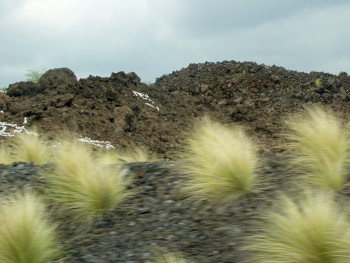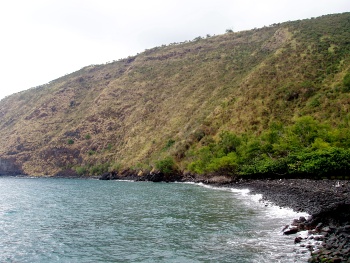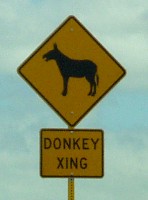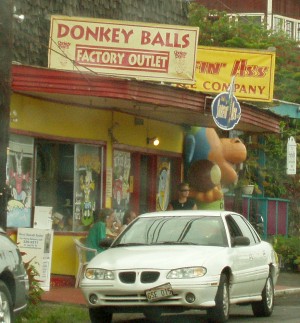We didn’t get to see much of the Hilo side of the island. Our last day there, we checked out of the hotel and just started driving, figuring we’d just see how far we could get before turning back to make our flight. We did actually make it to Hilo itself—just in time to turn around. (It was a Sunday anyway, and supposedly there isn’t much open in Hilo on Sundays.)
When we first crossed through Waimea to Hamakua, we took a side trip north to the lookout for Waipio Valley. The valley itself is unreachable without 4-wheel drive (the road has a 25% grade), but the view from the lookout was incredible:





